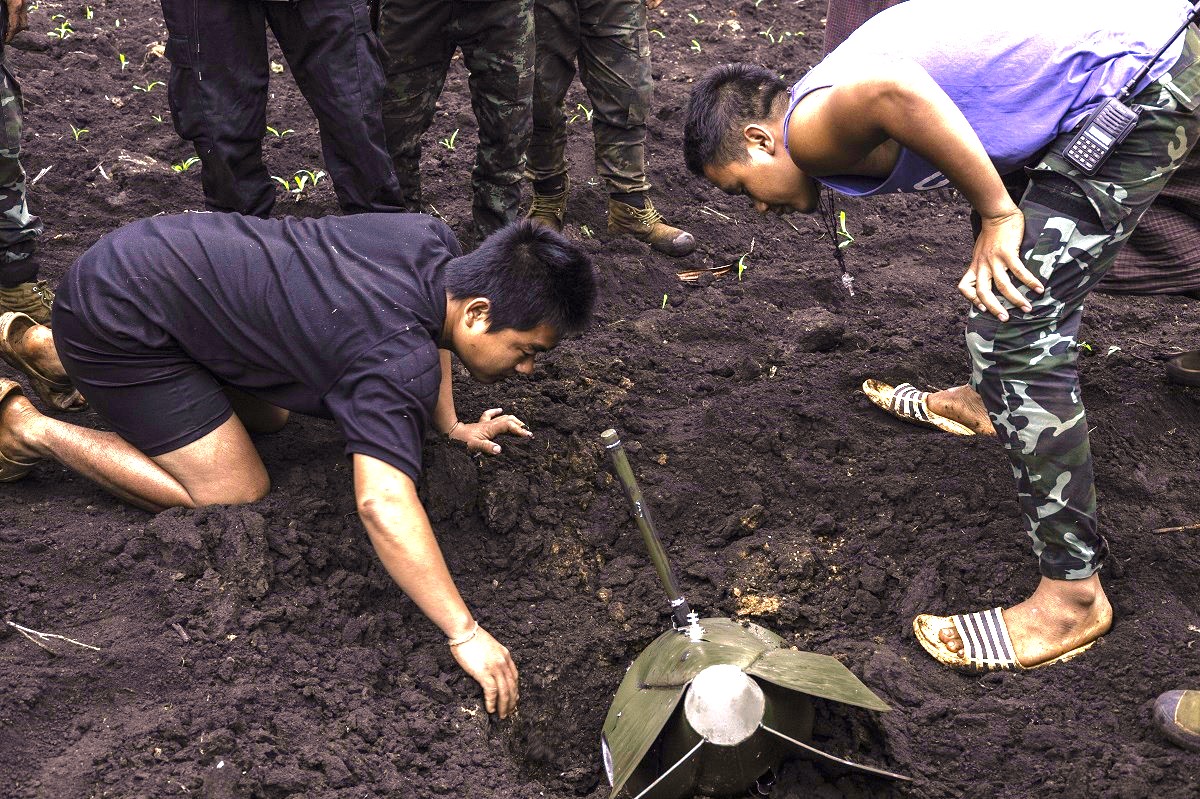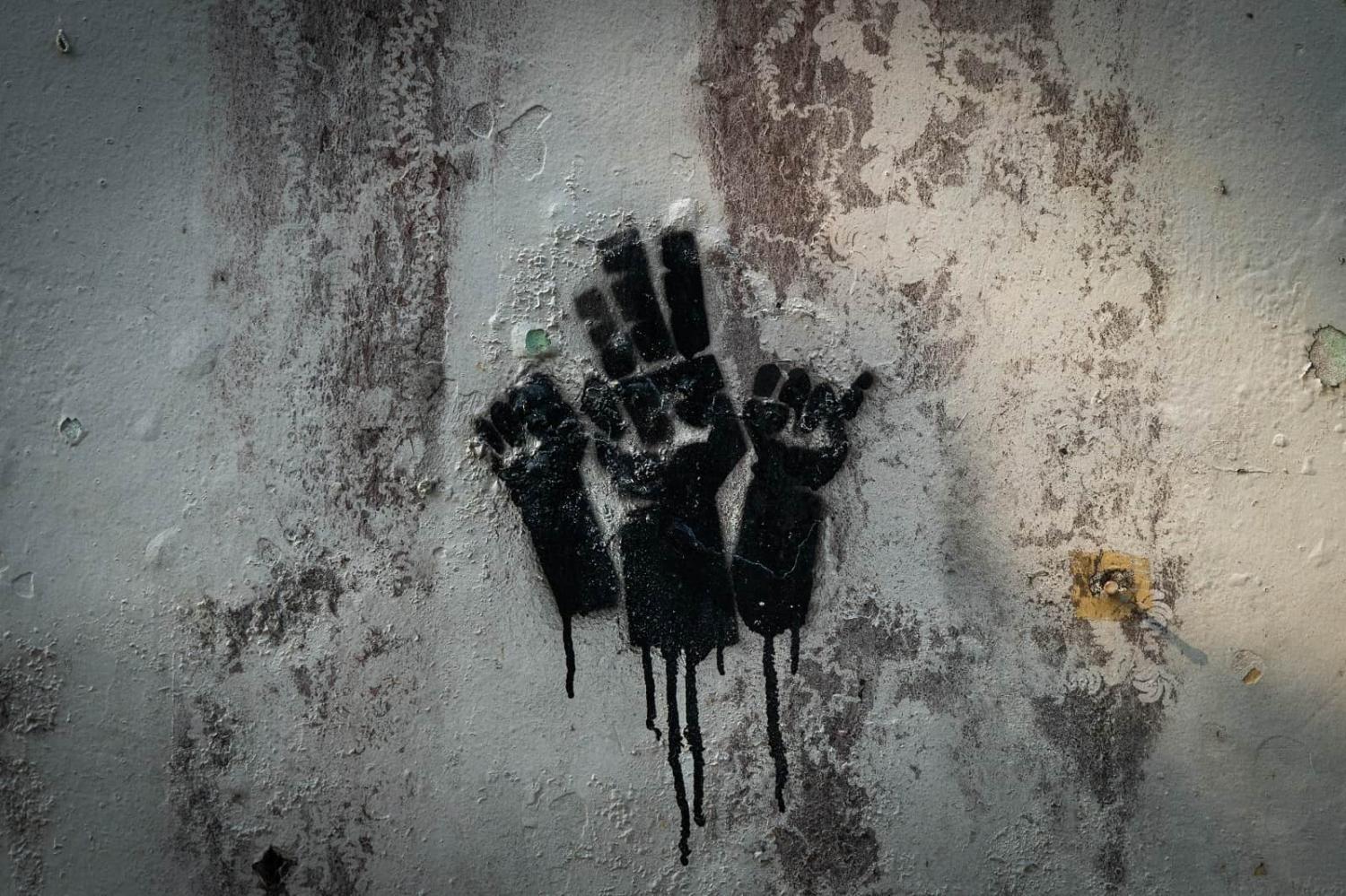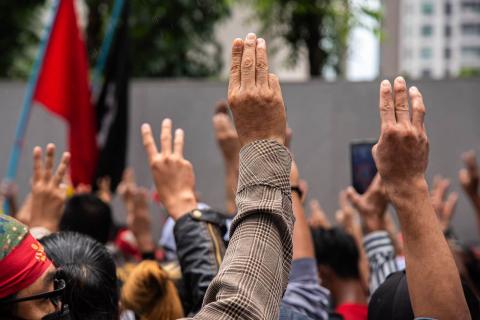Myanmar’s multi-sided civil war has no end in sight. Since the February 2021 coup d’état, resistance to the military junta (formally known as the State Administrative Council or SAC) has fueled greater use of extreme violence to pacify ethnic armed organisations and hundreds of local People’s Defence Forces, many of which are independent and others under command and control of the opposition National Unity Government (NUG).
The conflict may be in stalemate, but there has been a surprising tenacity and an enhanced capability demonstrated by many elements of armed resistance. This has led some commentators to contend that the Myanmar Army is losing, and becoming increasingly desperate. The evidence often cited is the greater frequency of mass atrocities perpetrated against civilians.
The NUG’s Ministry of Human Rights recently claimed that from the 2021 coup to the end of July 2023, the military had perpetrated 144 mass killings (classified as more than five people killed). In total, 1,595 civilians were reportedly murdered. Many atrocities involved decapitation and mutilation.
The Independent Investigative Mechanism for Myanmar, a United Nations instrument collecting evidence for future prosecution of war crimes, claims in its most recent annual report that military atrocities have become “increasingly frequent and brazen”.

The April 2023 bombing of the village of Pa Zi Gyi in Sagaing Region killed 165 people, and was likely to have involved a mass casualty-producing munition, possibly a thermobaric fuel air explosive. Helicopter gunships, supplied by Russia, followed with strafing runs, with no apparent distinction between civilians and armed actors. This represented the largest human toll from an air attack since the coup. A previous attack, in October 2022, on the northern mining town of Hpakant, killed approximately 80 civilians who were attending a concert.
Both strikes were cast as desperate measures, demonstrating the military reliance on air power because it had few troops to deploy on the ground or couldn’t move on roads without constantly being ambushed. It wasn’t widely reported after the Pa Zi Gyi airstrike that army units were indeed deployed in the days following, where they burned scores of houses and have hunted civilians for the past four months. This is what the military refers to as “clearance operations”.
Airstrikes have been used with greater frequency and have coincided with consistent use of labour-intensive arson attacks against villages by infantry units. Pillaging and destruction of property have been standard operating procedure for the Myanmar military for several decades. Data for Myanmar, which tracks military arson attacks, estimates 74,874 civilian houses have been destroyed by the army and their militia allies since the coup. This follows the pattern used against the Rohingya in 2017, against ethnic Rakhine civilians during the 2018–20 phase of fighting the Arakan Army, and against civilians throughout Myanmar for years.
What was for a time a clumsy approach to combined arms warfare and interoperability between infantry operations with air assault capacity and close air support, has evolved since the coup into a more capable, if still rudimentary, capacity to sustain operations with ground and air forces – predominantly down to post-coup practice and proficiency.
Some analysis contends that insurgent attacks on road transport have compelled the military to use rivers to move personnel, supplies and artillery. But the military has used river transport for decades: it’s not a recent logistical innovation.
In Kayah State, the use of daily airstrikes, predominantly against civil targets such as schools and clinics, is combined with heavy artillery attacks. Ground troops can still operate but require augmented strength against the rebel Karenni National Defence Force, which has carved out greater territory for their embryonic administration. Elsewhere, the situation is less promising. Claims in late-2022 that the military had “effective control” of dramatically diminishing levels of territory in Myanmar compared to the NUG have become less convincing.
In a recent press statement, Maung Maung Swe from the NUG’s Ministry of Defence claimed that joint resistance forces had seized 30 army bases and nearly 40 police and allied militia bases in the first six months of 2023. He also claimed forces had staged attacks on several military airfields, but no record of damage to aircraft was mentioned. His report claimed that forces had killed 3,012 Myanmar Army soldiers and wounded 4,021 in that time.
Casualty counts cannot be independently verified and are an imperfect metric, especially in Myanmar. Routine reports of deaths from clashes and ambushes are almost certainly exaggerated, especially in pro-NUG Myanmar language media. Yet even with lower estimates, army losses are evidently heavy but haven’t inhibited the ability of the army to conduct sustained operations on multiple fronts.
Two key downward trends make the desperation argument even shakier. Defections and desertions from the army and air force, which appeared to be on the increase in the year after the coup, seem to have reduced markedly. Internal disunity through mutiny or “fragging” of officers and senior NCOs has also not risen to any alarming level, despite a high tempo of operations and significant losses in ground units.
The distressing conclusion is that the SAC and its security forces aren’t desperate. They have long preferred sadism over hearts-and-minds as the central tenet of their counter-insurgency. Whether analogue arson or hi-tech airstrike, the junta’s methods add to the collective punishment of anyone deemed a threat.

